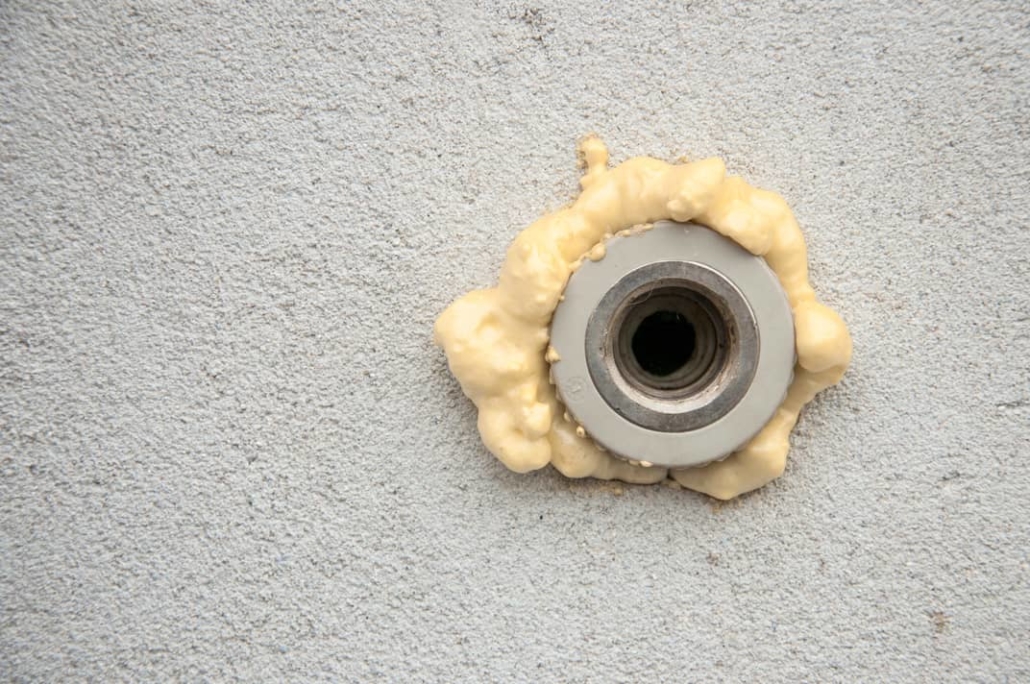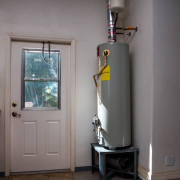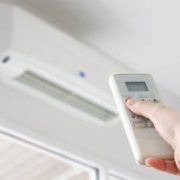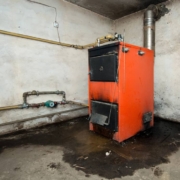Can You Use Spray Foam Around Hot Water Pipes
With so many products available to homeowners, do you even grasp what materials are used for what project? Also, most homeowners can take a stroll through their local hardware store and often not even realize what each item is used for. Always read the manufacturer’s labels before purchasing any products. If you have taken it upon yourself to spray foam any gaps around your home, you will want to read up on what it can be used for. Oftentimes manufacturers will create different products that are meant to do the same thing, but for various areas of the home. Can you use spray foam around hot water pipes? Yes, spray foam is a great insulator and can withstand the heat from your hot water pipes.
Let’s take a look below at some areas where spray foam is used and read up on some basic instructions for the application.
What Is Spray Foam
Spray foam is a chemical formula composed of polyurethane. Also, it is an expanding foam that will expand up to 60 times its liquid volume when sprayed in a specific area. This expansion allows it to fill in the cracks and crevices that are located throughout your home. Spray foam insulation can also be used in homes. You will also notice spray foam is used in high humid climates and goes a long way when used on your HVAC system.
Why Should I Use It
Believe it or not, there are many uses for spray foam. Keep in mind that spray foam is not just used around your hot water copper pipes or cold water pipes. Let’s take a look below at some of the recommended uses for spray foam.
- Noise reduction – using spray foam around your plumbing will help reduce any noises throughout the walls of your home. As a natural insulator, the spray foam keeps your pipes from knocking or even controls the noise of vibration created by the flow of water through your copper or PVC pipes.
- Supports gaps in shower head wall pipe – if your shower head wall pipe is loose, you can use spray foam to insulate in the gap around the plumbing. This will lock the pipe in place and prevent it from moving so freely.
- Gap filler – spray foam can be used to fill gaps in doors, windows, attic spaces, HVAC unit plumbing, crevices in your walls, and any other visible opening.
- Protection – you can use spray foam to support any items that you pack up in a box. The spray foam will protect your items from breaking.
- Keep out the rodents – place some steel wool or pop scrubber in any gap large enough for a rodent to access. Then fill in the gap with spray foam. Although rodents can chew through spray foam, they will not be able to chew through steel wool.
- Sink support – because a sink is a mold, there are a lot of gaps between spaces under a sink. Use spray foam to shore up those gaps. You will enjoy a longer lasting and more supported sink.

How Do I Apply Spray Foam
Just like all projects in a home, there is a step-by-step process that is recommended. Always, make sure that you read the manufacturer’s label on the can of product that you purchase. Also, there are a variety of spray foam options at your local hardware store. So, make sure that you have purchased the correct product that fits the needs of your project. Let’s take a look at some basic instructions.
- Clean the area that you are going to be spray foaming. Keeping dust and debris away allows the spray foam a quicker adhesive time.
- Always shake the can of spray foam for at least 1 minute.
- Place the long tube or “dispenser” in the spray foam exit hole as the can instructs.
- Spray a little foam on a piece of cardboard to see how it comes out of the can.
- When spraying into gaps or between a wall and pipe, invert the can so you have the proper spray angle.
- Pull the spray foam trigger and start filling the gaps.
- Once you are satisfied with the filling, wipe away any excess spray foam.
- Typically the foam will cure in about 15 minutes.
- Use a utility knife and shave off or cut out the excess foam that has cured.
Other Recommended Maintenance
Now that you have an understanding of using spray foam around pipes, you can also take a look at some other areas. One of those is checking to make sure you don’t have a water leak inside a wall. Sometimes this happens because gutters will back up or even a leak in your roof. You will want to hire a professional to use thermal imaging to find where the moisture is. Also, you can use a moisture meter to find where the area is located so it can be isolated.
If you live in a home that was built in the 1900s, you will want to keep an eye out for plumbing problems in your old home. This is because lead pipes, galvanized, and polybutylene was used in homes and may be dangerous or break down. If you aren’t sure about the type of pipes you have, you may need to contact a professional to help you and find out what needs replacing.
Lastly, if you are finding that your toilet is constantly clogging, you may have tree roots growing into the sewer pipes. They can grow as quickly as 30 days due to moisture and food in the pipes. You can use copper sulfate or rock salt to take care of this. Other options are hydro jetting, rooter or auger, rerouting, or repair.

When Do I Call A Professional
Calling on a professional contractor to use spray foam in your home is probably not necessary. Also, this type of project can typically be completed by the homeowner. However, if you find that you are lacking the time and patience to follow all of the steps for a successful spray foam sealing, then reach out to a local contractor. Sealing the gaps around your water pipes will help insulate them and reduce condensation and other concerns. Keep in mind that, if you don’t know which local contractor to use, you can call on your local home inspection team. Not only can they inspect your home for every opened gap in your home, but they can also refer you to a reputable contractor.
Conclusion
Being a homeowner is a tough task. Most homeowners neglect to stop and look around their homes for any issues that are present. Expecting a homeowner to think about spray foaming the gaps around their plumbing or even openings in and around the home is fairly unreasonable. For many homeowners, it is out of sight and out of mind. This is where having a yearly home inspection comes into play. Contact your local home inspection team so that they can search the inside and outside of your home for openings and gaps that could benefit from spray foam. Call on Heartland Inspections services in greater Minneapolis St. Paul and surrounding areas for your home inspection needs.











